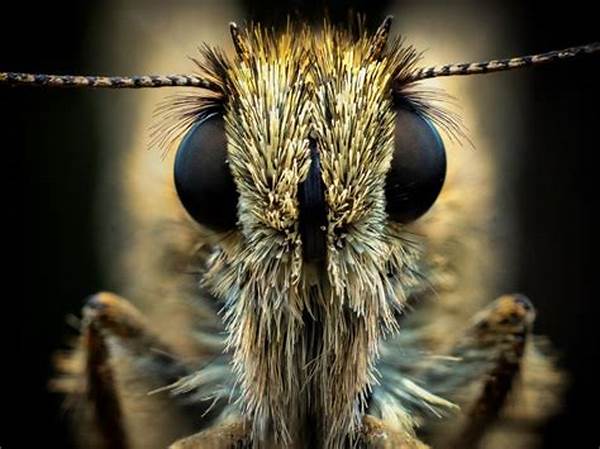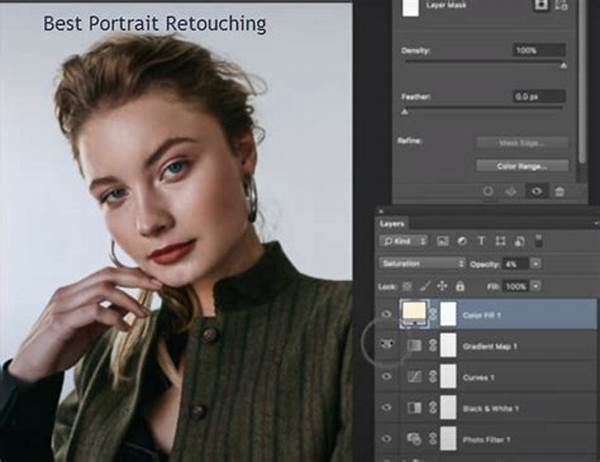Hey there, fellow photography enthusiasts! Today, we’re diving into the captivating world of macro photography. If you’ve ever marveled at the intricate details of a tiny insect or the delicate petals of a flower, you’re in for a treat. Let’s talk about achieving sharp focus in macro photography, a skill that can turn your macro shots from ordinary to extraordinary.
Read Now : Camera Setup For Clear Video
Understanding the Basics of Focus in Macro Photography
Macro photography is all about capturing the tiny details that are often missed by the naked eye. However, getting these details in sharp focus can be a real challenge. It involves understanding how depth of field works, the role of lighting, and the importance of camera settings. Achieving sharp focus in macro photography starts with mastering these elements.
First off, let’s chat about depth of field. In macro photography, you’re dealing with a very shallow depth of field, meaning only a small part of your subject is in focus. To counteract this, you might want to consider focus stacking, where you merge multiple images taken at different focus distances. This technique can help ensure that more of your subject is sharp and detailed.
Next up is lighting. Good lighting can make your macro shots pop with detail. Natural light is fantastic, but sometimes you may need to use a ring light or a flash diffuser to achieve the desired effect. Lastly, don’t forget your camera settings. Shooting in manual mode gives you full control over your aperture, shutter speed, and ISO, all of which are crucial for achieving sharp focus in macro photography.
Tips and Tricks for Achieving Sharp Focus
1. Use a Tripod: For achieving sharp focus in macro photography, stability is key. A sturdy tripod prevents blurriness from hand-held shakes.
2. Focus Manually: Autofocus might struggle in macro shots, so switch to manual focus to fine-tune your clarity.
3. Employ Focus Stacking: Take multiple shots at different focus points and stack them for super sharp detail.
4. Select a Small Aperture: Narrow depth of field is common in macro shots, so use a smaller aperture like f/11 to f/16 for better focus.
5. Adjust Your Distance: Experiment with your distance from the subject to find the sweet spot where detail is crisp and clear.
Gear Essentials for Macro Focus
When it comes to achieving sharp focus in macro photography, having the right gear makes a world of difference. First on the list is a dedicated macro lens. While you can achieve decent results with extension tubes or close-up filters, nothing beats the clarity and detail of a true macro lens.
Additionally, you’ll want to consider a sturdy tripod. Macro photography often requires longer exposure times, and even the slightest camera shake can result in a blurry image. A tripod ensures stability and lets you focus on composition and lighting rather than worrying about camera movement. Lastly, a remote shutter release is a great tool to have. It minimizes the risk of camera shake when taking the shot, contributing significantly to achieving sharp focus in macro photography.
Challenges in Macro Photography Focus
Macro photography is a fascinating pursuit, but achieving sharp focus can be tricky. Let’s explore the common challenges faced when capturing those magnificent details and how to overcome them.
1. Limited Depth of Field: Due to the close proximity to the subject, depth of field is incredibly narrow. Achieving sharp focus in macro photography requires careful adjustment of aperture settings and perhaps employing focus stacking.
2. Motion Blur: Even the slightest camera shake can introduce blur. Using a tripod or increasing shutter speed can help minimize this issue.
3. Autofocus Limitations: Autofocus systems often struggle with macro distances. Switching to manual focus allows for precise control and sharper images.
4. Lighting Constraints: Insufficient lighting can impact focus accuracy. Utilizing additional light sources like ring lights enhances sharpness, illuminating those intricate details.
5. Subject Movement: Macro subjects like insects can move unpredictably. Patience and using a faster shutter speed are key to capturing them in sharp focus.
Read Now : Creating Visual Harmony In Photos
6. Small Apertures: While smaller apertures increase depth of field, they can introduce diffraction, affecting sharpness. Finding a balance is essential.
7. Lens Considerations: Not all lenses are equal in macro photography. Investing in a quality macro lens provides better results.
8. Magnification Effects: Higher magnification highlights imperfections, demanding greater focus precision.
9. Camera Shake: Handholding the camera is risky in macro shots. A remote shutter release minimizes vibrations and enhances focus.
10. Post-Processing: Post-process sharpening can salvage less-than-perfect shots, but achieving sharp focus in macro photography starts with getting it right in-camera.
Adjusting Techniques for Better Focus
Let’s get into the nitty-gritty of achieving sharp focus in macro photography. Adjusting your techniques can drastically improve your results, allowing those tiny details to shine with clarity.
First, let’s talk about patience. Macro photography often requires a steady hand and a whole lot of patience. Your subject might be a skittish insect or a flower swaying in the wind. Waiting for that perfect moment when everything aligns takes time, but it’s worth it for that breathtaking shot. Achieving sharp focus in macro photography is often a waiting game, so take a deep breath and embrace it.
Secondly, don’t be afraid to experiment. Try different angles, distances, and settings. Move around your subject and see how the light changes the image. Switch up your aperture to see how it affects depth of field. This experimentation is key to understanding how different factors impact focus, and over time, you’ll discover the techniques that work best for you. Remember, achieving sharp focus in macro photography is as much about the journey as it is about the final image.
Overcoming Exciting Challenges in Macro Focus
Let’s face it, macro photography is wicked cool but comes with its fair share of hurdles. Achieving sharp focus in macro photography is like finding the perfect slice of cake at a dessert bar—it’s all about precision and patience.
Fighting with autofocus? We’ve all been there. Get cozy with manual focus instead. Trust me, nothing beats nailing the exact detail you’re drooling over. Remember those creepy-crawly critters who can’t stay still? Yeah, they might test your patience, but capturing their unique patterns makes it all worth it.
Also, shout-out to light! It’s your best buddy here. Whether it’s natural sunlight or a sweet ring light, playing with illumination will highlight all those tiny, intricate details. Achieving sharp focus in macro photography is an art, but also a playful exploration. Don’t be scared to try new things—eventually, you’ll find your groove and create some mind-blowing close-ups.
Summary of Achieving Sharp Focus in Macro Photography
Wrapping things up, achieving sharp focus in macro photography is a rewarding yet challenging endeavor. It’s all about nailing those technical aspects while exploring your creative side. With the right gear, like a reliable macro lens and sturdy tripod, you’re halfway there. Throw in some practice and patience, and you’ll be capturing stunning details soon enough.
Always remember, this journey involves adaptation and learning. From understanding depth of field intricacies to balancing lighting, each step enhances your skills and sharpens your focus. Embrace the process, relish in each imperfect shot, because they all lead to that awe-inspiring click. Achieving sharp focus in macro photography isn’t just a technique, it’s an adventure worth every pixel.



